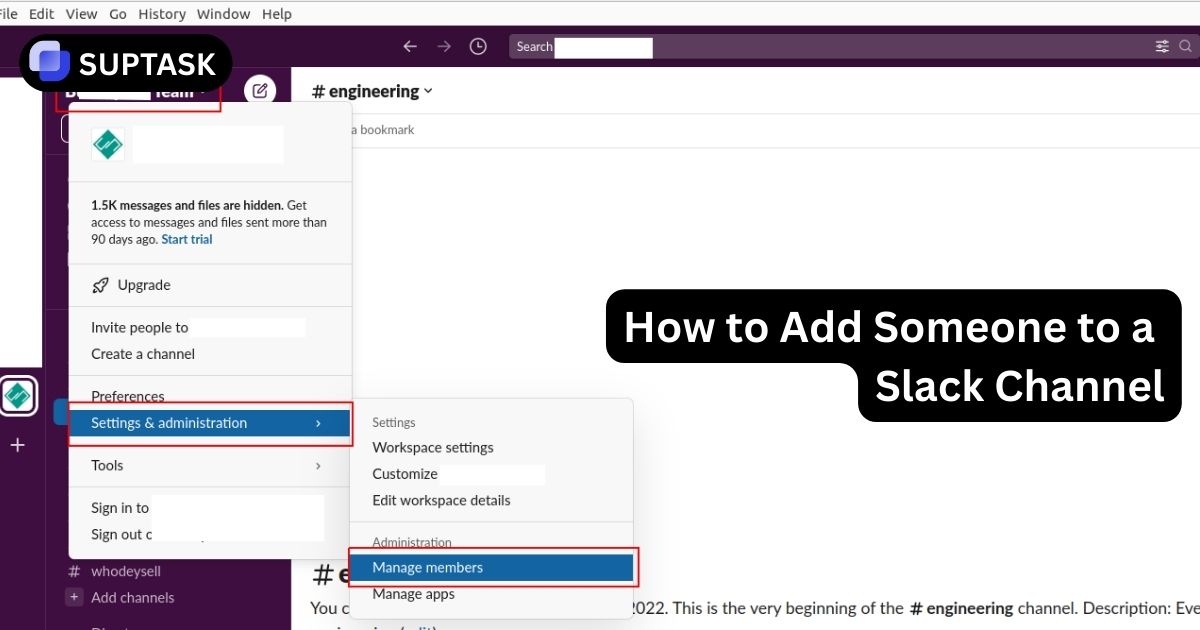SMART goals are specific, measurable, achievable, relevant, and time-bound objectives that boost productivity and achievement.
This guide will explain Smart Goals and how to set them effectively.
Key Takeaways
- SMART goals are defined by Specific, Measurable, Achievable, Relevant, and Time-bound criteria, enhancing productivity and goal clarity.
- Applying the SMART framework involves clearly defining objectives, using measurable outcomes, and creating actionable plans to track progress.
Understanding SMART Goals
.webp)
SMART goals provide a structured method for setting clear, actionable, and attainable objectives.
By transforming vague ambitions into defined plans, this approach enhances focus, drives efforts, and boosts overall productivity—offering a practical answer for those seeking how to be more productive.
What Are SMART Goals?
SMART is an acronym representing five essential elements:
- Specific: Clear and precise objectives.
- Measurable: Goals that can be tracked and evaluated.
- Achievable: Realistic targets within reach.
- Relevant: Aligned with broader objectives.
- Time-bound: Defined deadlines to ensure accountability.
Originating from George T. Doran’s 1981 introduction, the SMART model has become a cornerstone in goal-setting across various industries.
Why Use SMART Goals?
- Enhanced Focus: Clear targets minimize distractions.
- Improved Accountability: Progress tracking keeps teams responsible.
- Resource Efficiency: Better allocation of efforts toward meaningful tasks.
Breaking Down the SMART Criteria
.webp)
By understanding each SMART element, businesses can ensure effective goal-setting that fosters collaboration, strengthens accountability, and ultimately helps improve team work by aligning everyone toward common goals.
Specific
- Clearly define the desired outcome.
- Assign responsibility for goal achievement.
- Example: "Increase sales by 20% in the next quarter through targeted marketing campaigns."
Measurable
- Use metrics like numbers, percentages, or timeframes.
- Example: "Gain 1,000 new app users monthly."
- Tip: Include KPIs to track progress and adjust strategies.
Achievable
- Set goals that are challenging yet feasible.
- Consider available resources, skills, and limitations.
- Example: "Increase website traffic by 15% through a three-platform social media campaign."
Relevant
- Ensure goals align with long-term plans.
- Example: "Expand app users by optimizing store listings and running promotions."
Time-bound
- Establish clear deadlines to avoid project delays.
- Example: "Raise quarterly sales by 15% within three months."
Steps to Setting Effective SMART Goals
.webp)
Follow this process to set actionable SMART goals:
1. Define Your Objective
Clearly articulate your target.
- Example: "Boost monthly site traffic from 30,000 to 50,000 visitors."
2. Apply the SMART Criteria
Evaluate your goal against each SMART element.
- Tip: Use templates to streamline this step.
3. Create an Action Plan
Break tasks into smaller milestones and set benchmarks to track progress.
- Example: Use project management tools for clarity.
Examples of SMART Goals
.webp)
Setting SMART goals is crucial in the business sector for fostering growth, increasing productivity, and maintaining team alignment.
Businesses might use SMART goals, for instance, to improve sales performance, optimize marketing tactics, or define customer success roles and responsibilities.
By ensuring that each team member is aware of their duties, anticipated outcomes, and due dates, these objectives promote an environment of accountability and ongoing development.
Here are examples of SMART Goals for business:
- Marketing: "Increase brand awareness by 25% in four months through a social media campaign."
- Employee Engagement: "Boost team engagement by 15% in six months via team-building events."
- Sales: "Achieve $100,000 in new sales revenue by the end of Q3 through lead generation and customer retention strategies."
- Education: "Earn a professional certification in project management within one year by completing relevant courses and exams."
- Customer Service: "Improve customer satisfaction scores by 20% over six months by implementing a new feedback system."
Benefits of SMART Goals

- Motivation & Focus: Defined goals foster a clear action path, helping individuals and teams concentrate on specific outcomes.
- Resource Management: Tasks are prioritized based on significance and urgency, ensuring the efficient use of time, funds, and manpower.
- Team Coordination: Clear roles and responsibilities reduce misunderstandings, streamline collaborative efforts, and enhance communication between teams, ensuring everyone stays aligned toward common goals.
- Progress Tracking: Well-defined metrics allow regular progress monitoring, enabling timely adjustments when needed.
- Enhanced Accountability: With established deadlines and measurable results, team members remain responsible for their contributions.
- Increased Productivity: The structured approach minimizes wasted effort, fostering a result-oriented mindset.
- Better Decision-Making: SMART goals provide clear criteria for evaluating options and making informed decisions during project planning and execution—an essential skill for anyone looking to learn how to be a better manager.
Tools and Resources for SMART Goal Setting
.webp)
Achieving SMART goals becomes more manageable with the right tools and resources. Here are some recommended solutions:
- Smartsheet: A versatile tool for planning, progress tracking, and reporting.
- Goal Templates: Pre-designed formats help maintain consistency and cover every aspect of the SMART framework.
- Digital Tools: Use project management software like Trello, Asana, or Microsoft Planner for seamless goal monitoring and collaboration.
- Analytics Platforms: Tools like Google Analytics and KPI dashboards can track measurable outcomes effectively.
- Time Management Apps: Apps like Todoist and TimeCamp help keep deadlines in check.
How Suptask Supports SMART Goals
Suptask is a powerful platform designed for task management and team collaboration, making it easier to implement SMART goals effectively:
- Task Assignment & Tracking: Assign specific tasks to team members, ensuring clarity and responsibility.
- Progress Monitoring: Real-time updates and progress reports help track measurable outcomes.
- Achievable Planning: Use built-in project templates to set realistic timelines and action steps.
- Relevant Integration: Seamlessly connect with tools like Slack, making Suptask a central hub for team communication.
- Time-bound Alerts: Set deadlines with automated reminders to keep projects on track.
Implementing these strategies ensures a practical and results-driven approach to goal setting, paving the way for personal and professional success.
FAQ
What does SMART stand for in goal setting?
SMART stands for Specific, Measurable, Achievable, Relevant, and Time-bound, guiding you to create effective and focused goals.
This framework enhances clarity and increases the likelihood of success in your objectives.
Why are SMART goals important?
SMART goals are crucial as they deliver well-defined, actionable objectives that enhance motivation and increase productivity by being measurable.
They offer a methodical framework that helps maintain focus and responsibility in your endeavors.
How can I make my goals measurable?
To make your goals measurable, incorporate specific metrics like numbers, percentages, or deadlines to help track your progress and assess your success.
This approach provides clarity and direction as you work towards your objectives.
Can SMART goals be applied to personal development?
SMART goals are highly effective for personal development, as they ensure your objectives are specific, measurable, achievable, relevant, and time-bound, leading to meaningful progress.
What tools can help in setting SMART goals?
Leveraging resources such as Smartsheets and templates designed for SMART goals can significantly improve the efficiency of your goal-setting process, ensuring that each aspect of the SMART criteria is thoroughly addressed.
These tools can be instrumental in sharpening the clarity and concentration of your goals by adhering to the specific principles of smart goal setting.













